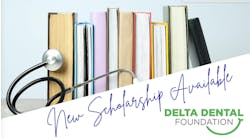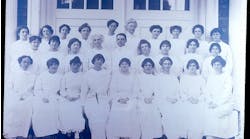by Becky Matthews, RDH, BS
Technology can be used to support dental hygiene skills, representing a quantum leap in the ability to motivate patients to make healthy choices.
Twenty-five years of dental hygiene has left me uniquely qualified to look back and marvel at the unbelievable technological advances available to today's hygienist. Years ago, we were little more than oral janitors who knocked calculus off teeth. It is no wonder that burnout has always been a huge issue among our fellow professionals. It is generally accepted that one of the best ways to avoid burnout is to continually learn how to be more effective at the chair.
The immense responsibility of every hygienist in practice today is to adequately perform periodontal therapy, a clinical skill acquired through repetition. However, it is behavioral skills - the ability to motivate patients to make healthy choices - that have always distinguished the really great hygienists.
The exciting news for hygienists today is that technology can be used to support these skills, which represents a quantum leap in our ability to motivate patients to make healthy choices.
Patients are taking a more active role in their health-care than ever before, and that makes our ability to communicate information effectively more crucial than ever. Recognizing this, our office recently "took the plunge" and - after many team meetings and much trepidation - decided to "go paperless."
We knew that we needed to integrate all of our systems into one software package. After much research, we decided on Patterson EagleSoft. The fear of having to learn a whole new system was daunting, but the support services we received allowed us to be fully functional in a very short time.
The practice management software has helped our practice run very efficiently. I enjoy pulling up the notes from previous appointments so that the patient and I can review them together. This also assures the patient that there is continuity in his or her care, which immediately makes it is a more collaborative, effective office visit.
I can review treatment plans, periodontal chartings, medical history, and even schedule their next visit so that it is designed just for them. (We all have those clients who love to talk!) I can even document my chartings and notes without any assistance through the use of EagleSoft's voice activation. My patients feel as if they are receiving very personalized service.
When it comes to assessing the quality of home care or periodontal status, technology allows us to work together with our patients. Instead of explaining that a filling is "going bad," or telling a patient they need to work on their home care, we now use our intraoral camera and software to display that leaky margin or cracked tooth on a monitor right in front of the patient's eyes. The camera is great because it is very small, light, and user-friendly, which makes it quick and easy to visually communicate a message to a patient.
Digital radiography is another useful tool. Our Schick system enables us to digitally enhance and magnify images so they are easier to see on the monitor. It also is very convenient to print digital X-rays or intraoral images at the touch of a button for patients to take home, or to send to the insurance company with a narrative. It used to be next to impossible to show patients their conventional X-rays and point out such concerns as bone loss or a widened periodontal ligament, let alone recurrent decay under restorations. Now, with digital X-rays and the intraoral camera, we can actually show them all of these, plus open margins, stress fractures, wear, and gingival recession.
Explaining how all of these conditions are interrelated in the oral health of a patient also is much easier with support from digital imaging. Patients who actually see their problems close up are more likely to own the conditions and choose a solution, or at least discuss the options.
Hygienists know that we can't, in good conscience, recommend treatment to patients unless we firmly believe in the quality of the dentist's restorative skills. It is the same for me when I recommend new technology to hygienists. It has improved the quality of life for our patients and, therefore, ours too. Patients want a more collaborative experience with their dental team, and this experience has been extraordinary.





